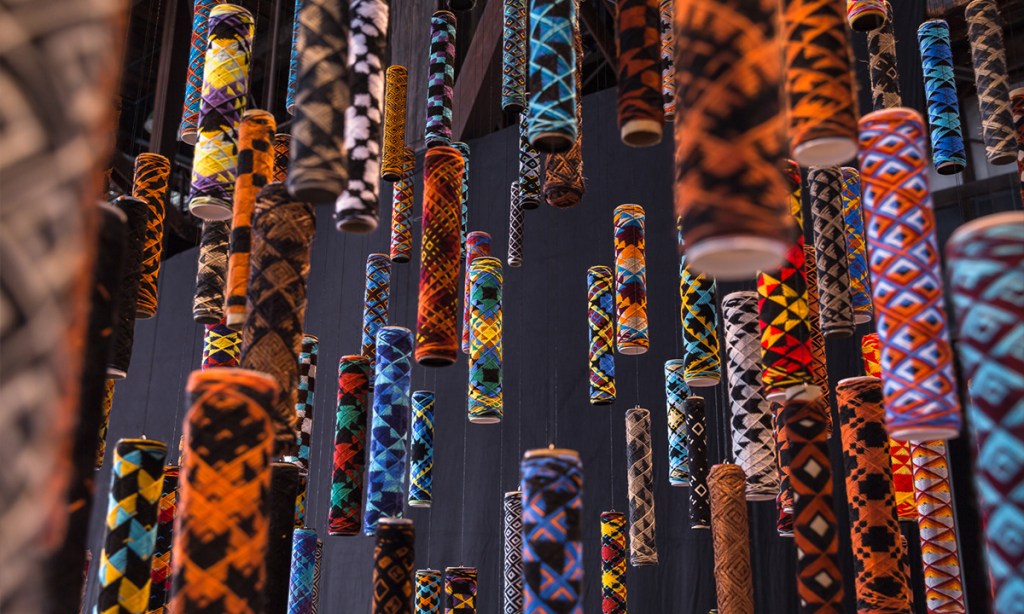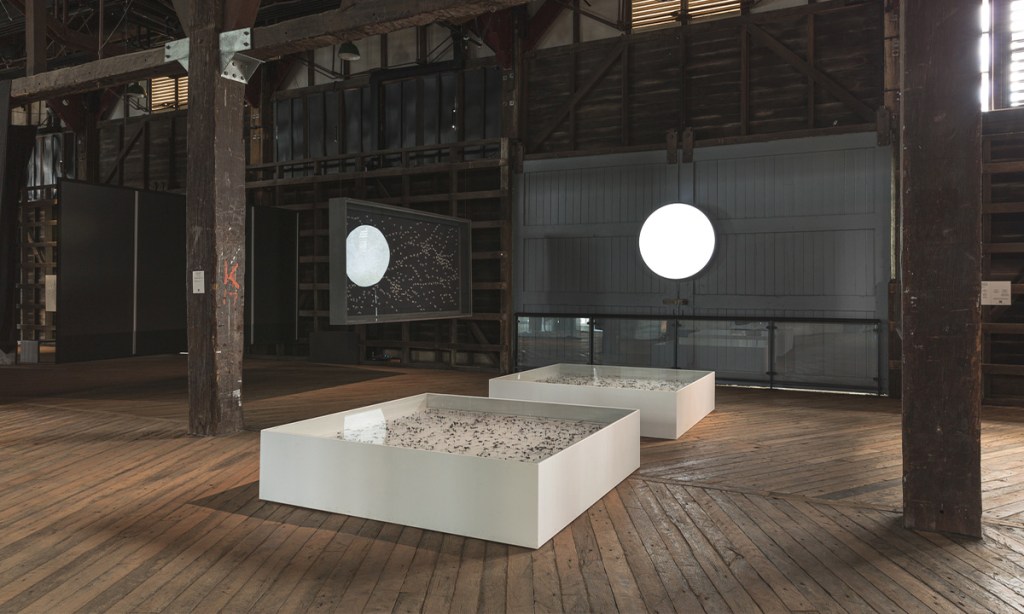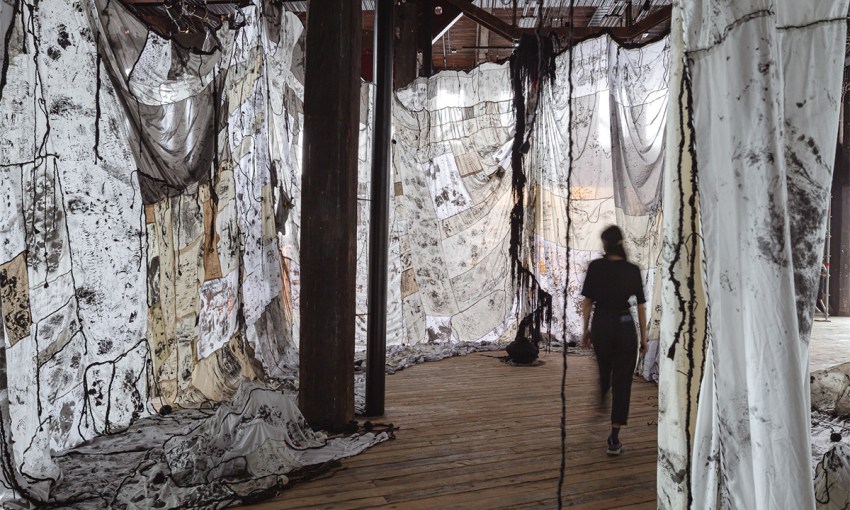Pairing selected works from the internationally renowned 23rd Biennale of Sydney with a noteworthy local commission and suite of public programs, Adelaide Contemporary Experimental’s new exhibition gently immerses audiences in crucial ideas about our relationship with water.
The joy and urgency of ‘A river that flows both ways’
Last year, at rīvus, the 23rd Biennale of Sydney, several bodies of water were listed as participants alongside contributing artists, with their voices represented by First Nations Elders and Custodians.
“Aboriginal epistemology, or knowledges, does not view land as something that you own, it owns you,” says Dominic Guerrera, a Ngarrindjeri, Kaurna and Italian multi-disciplinary artist and curatorial liaison for Adelaide Contemporary Experimental (ACE). “So, for me, you can’t own a river, a river owns itself. It is its own living entity. That is a worldwide Indigenous reality.”
Dominic is helping local audiences interrogate our relationship with water through ACE’s current exhibition, A river that flows both ways: Selected works from ‘rīvus’, the 23rd Biennale of Sydney.
The exhibition was developed through a special partnership between ACE and the Biennale of Sydney, a celebrated international contemporary art event.
“We’re one of four institutional partners participating in a new national co-commissioning and co-curating model the Biennale has called Casiquiare,” says ACE artistic director, Patrice Sharkey.
“It’s about the sustainability of commissioning significant international artworks and being able to share them with audiences across Australia, bringing local knowledges and contexts to the artworks along the way.”
Patrice has curated four major works from the Biennale for the ACE exhibition.

Take a guided tour of the exhibition with Dominic Guerrera:
Saturday, 4 March
More info
The pieces by artists Imhathai Suwatthanasilp (Thailand), Aluaiy Kaumakan (Paiwan Nation), Yuko Mohri (Japan), and Sopolemalama Filipe Tohi (Tonga) were chosen not only for the depth of their ideas, but also because they bring artistic forms and functions not often seen in Tarntanya Adelaide to the region.
ACE has placed those four global works in dialogue with a local commissioned piece, in which the voice of Murrundi (the Murray River) is drawn out by Ngarrindjeri writer and cultural awareness educator Clyde Rigney Jnr in collaboration with Change Media.
“It’s presented as a video portrait where Clyde speaks about the importance of the water to the Ngarrindjeri, and it will greet people as they enter the exhibition,” says Patrice.
Cumulatively, the five works come together in an exhibition that extends the ideas of the Biennale and brings them home for local viewers in a sensory, immersive experience that fills ACE’s gallery.
“Our interwoven relationship with the natural world, from the macro to the micro, is ever present across the exhibition,” says Patrice.
“Thai artist Imhathai Suwatthanasilp has made small objects from human hair, fish scales and moth wings, representing plankton, stars and viruses, while Japanese artist Yuko Mohri presents a joyous sound installation inspired by makeshift water repairs found at subways across Tokyo.”
To help visitors navigate the exchange of ideas that flows between the works in the gallery, Dominic is spearheading a suite of public programs to accompany the exhibition.
At their centre is a guided tour, led by Dominic, who will gather insights via conversation with each of the artists and then share those with visitors.
“I’m creating a two-way street,” he says.
“I am going to do a walk-through, but I also want to help people on that tour to challenge themselves to think about the work and how it relates to them, and to look at art differently as well.”

The public programs will also include a series of talks curated by Dominic featuring First Nations thinkers who live closely with water, and a keynote lecture by José Roca, artistic director of the 23rd Biennale of Sydney.
Each of these events and the exhibition itself, says Dominic, is an opportunity for audiences on Kaurna Land to not only see major international art works, but also to spark new thinking about some of the most important issues of our era.
“Often a lot of the conversations we’re seeing is around the destruction of water bodies – and how that starts from either colonialism or capitalism, and quite often they go hand in hand,” he says.
“I think we need to be having these global conversations and seeing that the blueprint of capitalism and colonialism is the same around the world, and also that we can learn from each other on how to combat it.”




